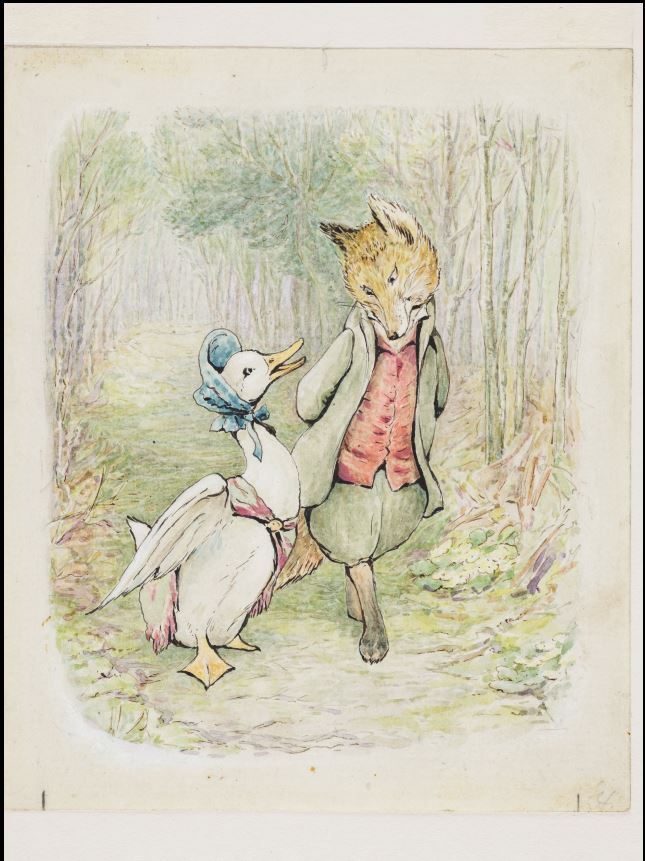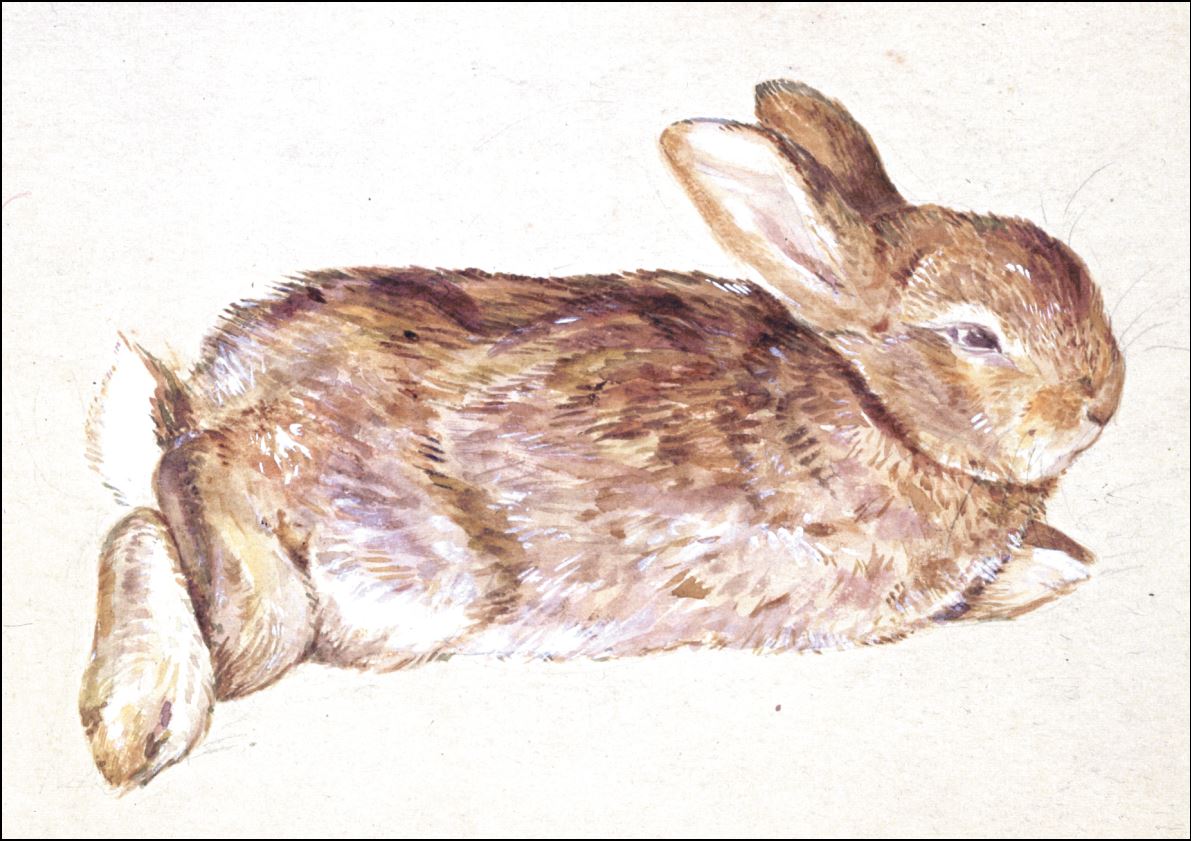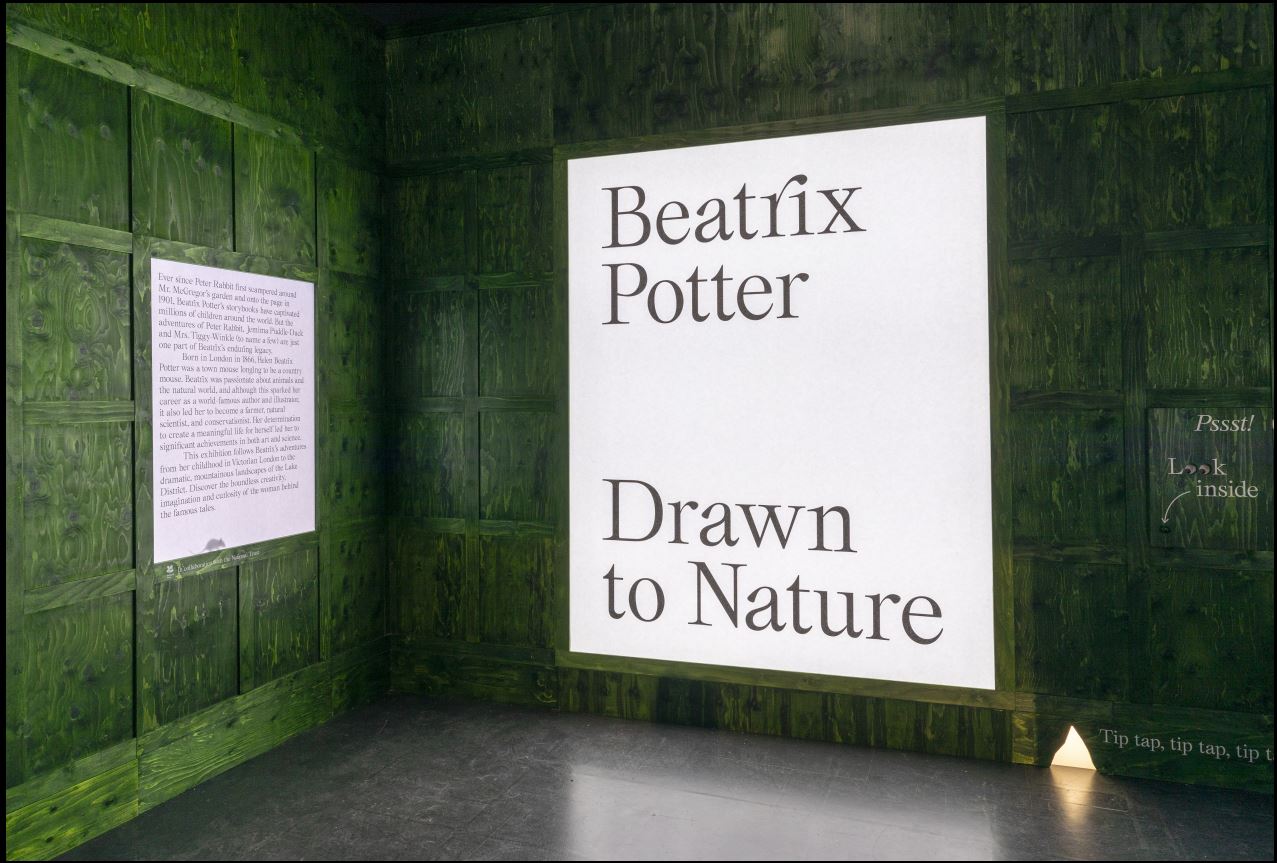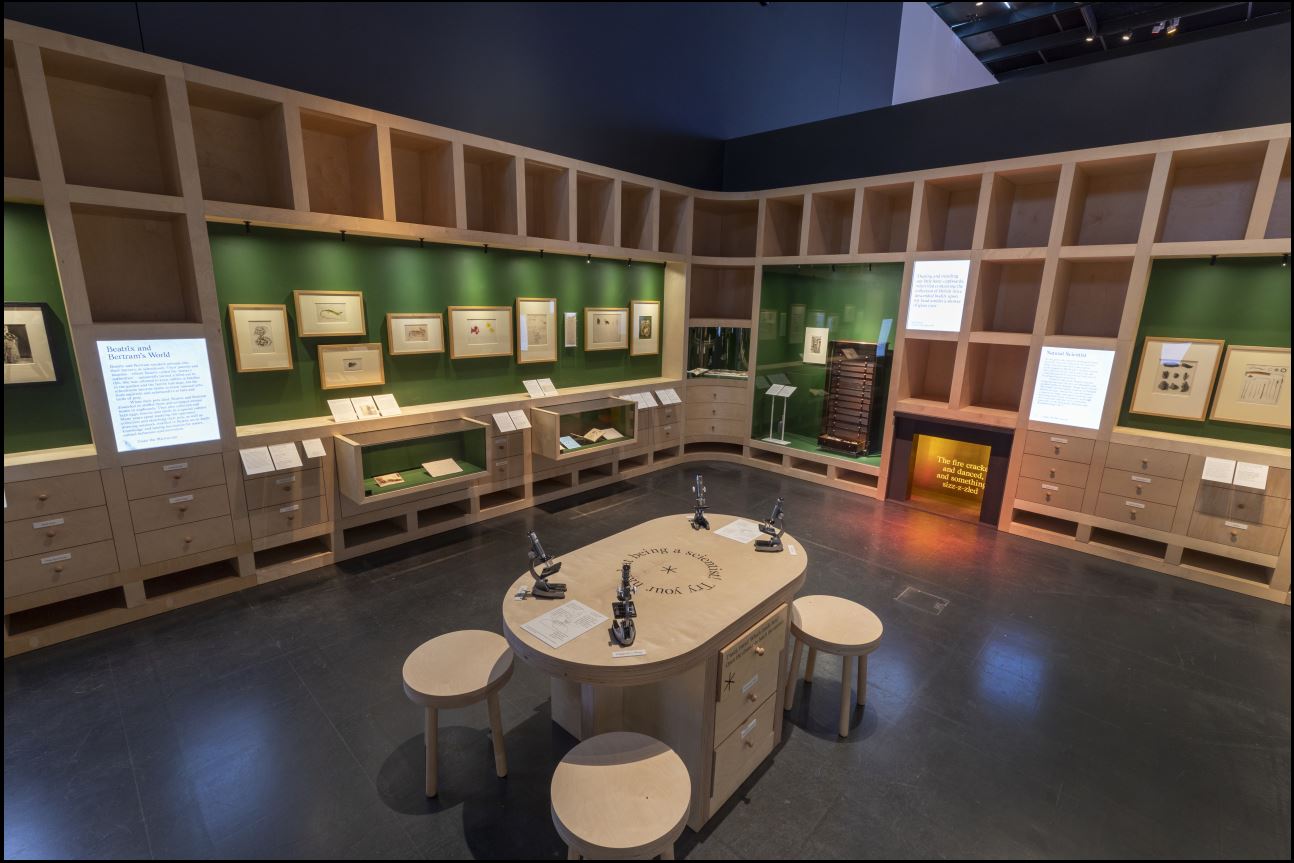- youtube
- bluesky
- Home
- About
- Costume Journal
- Membership
- Conference & Events
- Grants & Awards
- News & Social
One of the world’s most loved and celebrated authors, Beatrix Potter, takes centrestage at legenday fashion museum, the V&A.
On 12th February, the V&A opened ‘Beatrix Potter: Drawn to Nature’, joining forces with the National Trust to explore the magical world of celebrated author Beatrix Potter.
Beatrix’s love of nature and excellent artistic skill is clear to see from a young age, as well as her eclectic interests spanning natural sciences, farming and conservation especially in the Lake District. The exhibition highlights the clear connection Beatrix had with textiles and clothing in her work through a display of the beautiful waistcoats that are a key feature in her work 'The Tailor of Gloucester'.
“Beatrix lived quite close to the South Kensington Museum - about 20 minutes walk away - and visited it to study and copy artworks on display or in the library. She also sat art exams at the Schools here.
Beatrix wrote to her publisher Norman Warne on 27 March 1903 that she was ‘delighted’ to find some beautiful 18century costumes on display in a 'dark corner of the goldsmith's court’. We have identified at least five of the costumes from our collection that feature in the Tailor illustrations. We also have two sketches, one of the waistcoat (on display) and a pencil drawing of the Mayor’s coat, which show that she was able to have the objects laid out on a table to draw.
Incidentally she practiced embroidery and one of the objects in our collection is her grandmother Leech's copy book of embroidery designs. Her family background was in textiles, her grandfather Edmund Potter was a calico printer,” shares Annemarie Bilclough, Warne Curator of illustration and the V&A.
The exhibition curation is eclectic with items sourced nationally including original watercolours, drawings, manuscripts as well as a fascinating selection of Beatrix’s letters, photographs, furniture and decorative art that are all displayed in gorgeous display units. “To research the exhibition I looked at almost all of the major collections of Potter material. We wanted to include mycology drawings from the Perth museum (Scotland) and the Armitt in Ambleside, which are the two most important collections of Potter's mycology. We also researched objects once belonging to the Potters using an inventory from her parents' home in Bolton Gardens and consulting with colleagues in the National Trust and Manchester Art Gallery,” Bilclough shares.
The design of the rooms is beautiful, really detailed and there is a lovely use of strong colour. The lead 3D Designer was Sam Brown at the V&A who worked with the external graphics design studio Nina Jua Klein and lighting designers at Michael Grubb Studio.
“The curator first meets with the Design team to give them an account of the exhibition themes and narrative and show them as many original artworks as possible to give them a sense of the subject matter, inspirations, colour palette. The Designers also visited the Lake District. Curators also feed in some of the text for evocative quotations. In this case we fed in the quotes from Potter's journals and the drawer labels and provided the onomatopoeia for the walls in Place as Inspiration (A Natural Storyteller).
In a family-friendly show, it's important that the design is matched and works harmoniously with, and as part of, the interpretation of the narrative and the interactive features. Some elements of the design also serve as part of the interpretation. The Interpretation and Curatorial teams also contribute the ideas for interactive features and provide the source material to help fine-tune the interpretation.
There are four basic ideas in this design, some of which stem from the exhibition narrative and some from the designers’ inspiration taken from the artworks. Firstly, the journey from a claustrophobic interior to the great outdoors came from the curator's narrative. The 3D designer created panelled structures throughout all rooms, changing depending on the exhibition narrative, so more of an open build resembling gates and fences for the last room.
Secondly, the meandering route - this was what remained of the designer’s initial plan for a route mimicking mycelium inspired by Beatrix's study of fungi. Thirdly, life behind the walls - the inspiration Potter got from the animals around her and her study of natural history, and the artworks she made showing animals behind the wainscoting. The 3D designer created a scheme based on panelling and the graphic designers came up with the idea of the animations. Finally, changing perspectives - some ideas came from curators, like the idea of being rabbit-sized in the 'garden' and the rat crack shaped doorway from A Natural Storyteller into the Hill Top room,” Bilclough explains.
Each room uses animated and interactive designs, that highlight the theme and narrative of the exhibition. “Originally the plan was to have a rabbit at the very start but actually the mice behind the panelling evokes perfectly the Victorian townhouse. This is coupled with sounds of scrabbling and the mice holes in room one. The insects in room one come from the idea of collecting and studying using microscopes. My favourite animations are the insects growing larger between the large and smaller panels in room one and I love the mice with the cotton reel in room 3, especially the one winding the thread up from the top!”
Exhibition visitors can get up close to a wide range of Beatrix’s classic tales and much-loved characters including Peter Rabbit, Jemima Puddle-Duck, Benjamin Bunny and Peter Rabbit. “I have so many favourite pieces in the exhibition but the ones that spring to mind first are the miniature letters between Squirrel Nutkin and his brother and the pompous Rt Hon Mr Brown Owl Esq MP. The fact that Squirrel keeps revising the address because he gets it wrong and thinks that is why he gets no reply. Then the reply in the third person from the MP saying he couldn't reply because he's asleep!” Bilclough shares.
‘Beatrix Potter: Drawn to Nature’ is open now until 25th September 2022.
Image gallery

The Mice at Work Threading the Needle, The Tailor of Gloucester artwork, 1902. Watercolour, ink and gouache on paper © Tate

The Tale of Benjamin Bunny, Peter with handkerchief by Beatrix Potter, 1904. Watercolour and pencil on paper. © National Trust images

The Tale of Jemima Puddle-Duck artwork, 1908. Watercolour and ink on paper. © National Trust images

Drawing of a rabbit (Peter Piper) by Beatrix Potter. ca 1892. (c) Victoria and Albert Museum, London, courtesy Frederick Warne & Co Ltd.

Beatrix Potter Drawn to Nature, installation image (c) Victoria and Albert Museum, London

Beatrix Potter Drawn to Nature, installation image (c) Victoria and Albert Museum, London

Beatrix Potter Drawn to Nature, installation image (c) Victoria and Albert Museum, London

Beatrix Potter Drawn to Nature, installation image (c) Victoria and Albert Museum, London